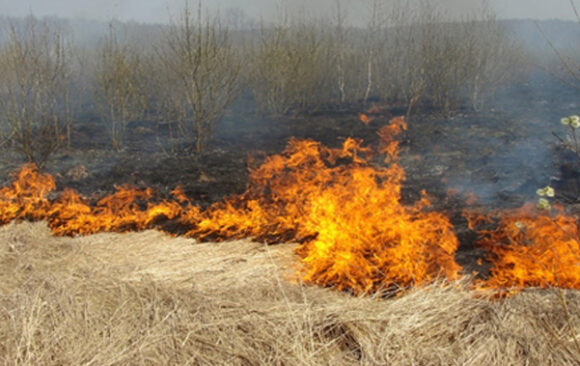It is undeniable that the frequency of wildfires is increasing year by year, with their destructiveness and consequences becoming more pronounced, as reflected in media reporting. Each year, we witness the loss of forest areas and valuable resources in these uncontrolled fires.
When discussing fire frequency, it is important to distinguish between the number of fires and the burned area, which may or may not correspond. The fluctuation of fires in Bosnia and Herzegovina shows that the number of fires is higher in the spring, while the total burned area can be much larger during the summer season, even though the number of fires is significantly lower.
However, since fires result from complex factors such as human activities and climate change, these fluctuations are variable. According to the Annual Report on Fires in Europe, the Middle East, and North Africa for 2022 by the European Fire Information System (EFFIS), the highest number of fires and the most affected area occurred in March. Reports from previous years also show that the greatest damage happens in the spring period[1]. The reason for this fire distribution is human activities on agricultural land. To prepare for the next season, farmers often burn dry grass and weed. Due to underdeveloped, leafless vegetation, a poor winter with little snow, and dry soil, the fire spreads easily and quickly to forest areas and tree canopies.

Besides human activities, climatic factors will lead to a higher frequency of fires. It has been recorded, and is noticeable, that dry periods are becoming more frequent and prolonged, especially in the Balkans and the Mediterranean[2]. Prolonged dry seasons, high temperatures, reduced relative humidity, and changes in precipitation patterns will affect the reduced moisture of combustible material in nature, which is a crucial factor in assessing the risk of fire occurrence and difficulty in extinguishing fires. Combustible material refers to all organic matter in nature that is flammable and capable of transmitting fire to surrounding bodies.
Fire Weather Index
A commonly used indicator for assessing fire risk is the FWI (Fire Weather Index). This index was designed in Canada and is used worldwide for classifying different types of combustible material. It is based on daily meteorological data such as temperature, relative humidity, wind speed, and precipitation. Based on these data, values for six FWI components are obtained: the first three components indicate the moisture of different types of combustible material found on the forest floor, and the last three components relate to the rate of spread, consumed fuel, and fire intensity[3].
Forecasting Models and Challenges
The Balkans and the Mediterranean have recorded some of the most pronounced changes regarding extreme temperatures and dry periods, and forecasts for the future indicate that changes will continue in the same direction. The greatest danger predicted for the Balkan Peninsula concerning wildfires is the shifting of the fire season and affected areas to mountainous regions[4]. Since our mountains are rich in diverse vegetation, prolonged dry periods will affect the reduced moisture of organic matter, representing an ideal source of combustible material and increased FWI (Fire Weather Index).
Although sophisticated models are used to forecast expected climate changes, they are subject to numerous shortcomings. As all ecosystem and climate changes are interconnected and complex, it is very challenging to predict all the constantly changing factors that will ultimately lead to (un)expected changes.
Not All Is Doom and Gloom
Besides the significant changes predicted in terms of climate change and the dynamics of fire occurrence and spread, which currently seem insurmountable, we have the opportunity to find effective preventive measures and methods of restoration. This will require change of certain land management regimes, utilizing traditional knowledge and modern technologies, as only through an interdisciplinary approach it is possible to adequately respond to the growing need for adaptation to climate change. Maintaining international cooperation and raising public awareness can make a significant step towards preserving forest ecosystems.
[1] Kok, E., Stoof, C., 2023. Country report for Bosnia and Herzegovina, in San-Miguel-Ayanz et al. (Eds), Forest Fires in Europe, Middle East and North Africa 2022, Publications Office of the European Union, Luxembourg, 2023, doi:10.2760/348120, JRC135226.
[2] Camia, A., Liberta, G., San-Miguel-Ayanz, J., Modeling the impacts of climate change on forest fire danger in Europe, doi:10.2760/768481
[3] M. Moriondo, P. Good, R. Durao, M. Bindi, C. Giannakopoulos, J. Corte-Real, “Potential impact of climate change on fire risk in the Mediterranean area”, CLIMATE RESEARCH (2006)
[4] M. Moriondo, P. Good, R. Durao, M. Bindi, C. Giannakopoulos, J. Corte-Real, “Potential impact of climate change on fire risk in the Mediterranean area”, CLIMATE RESEARCH (2006)
